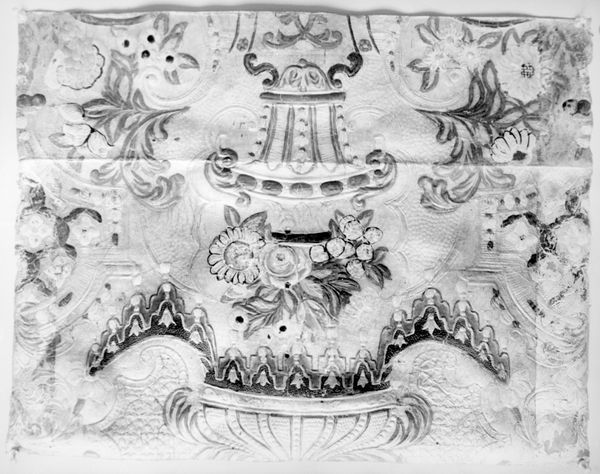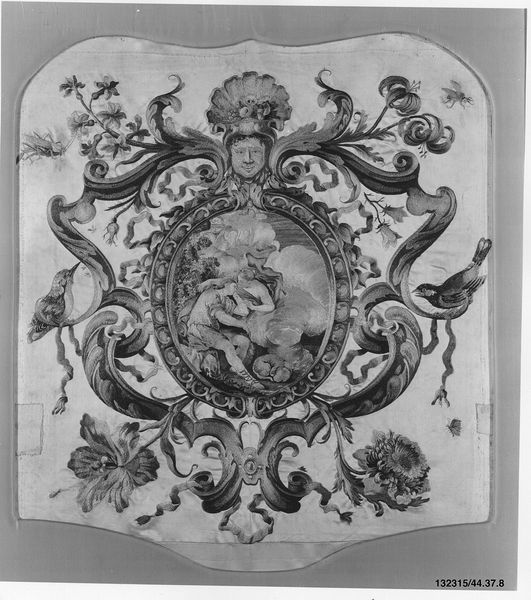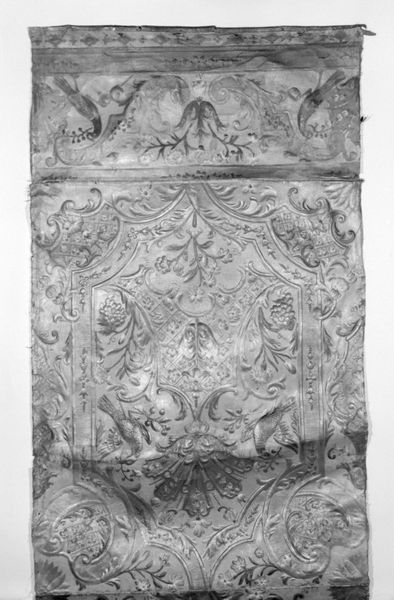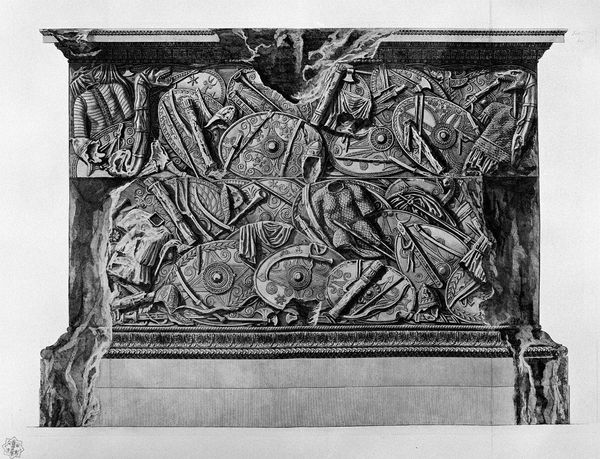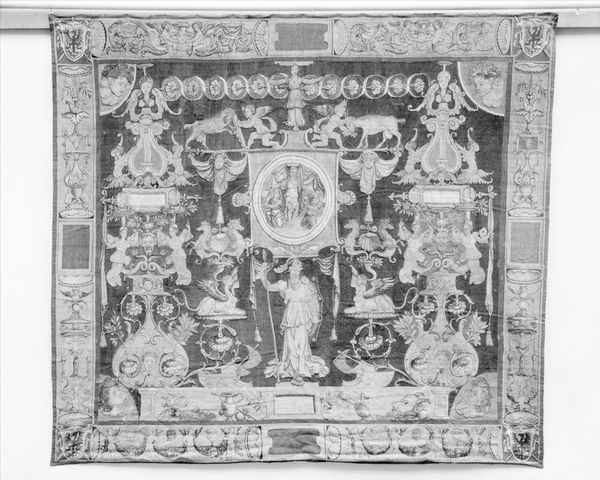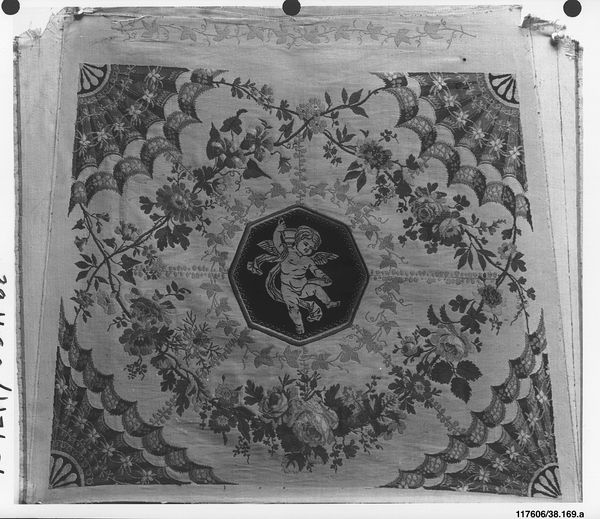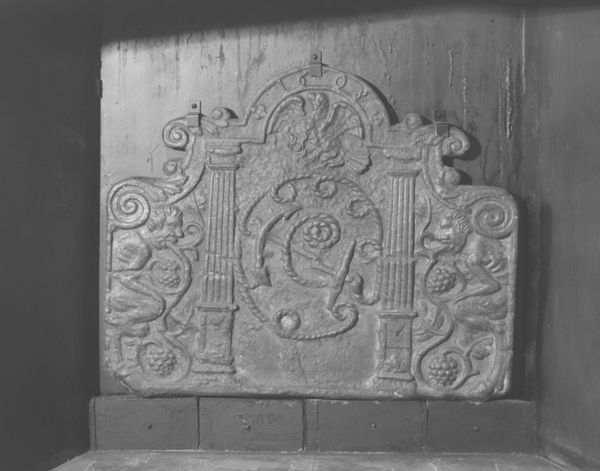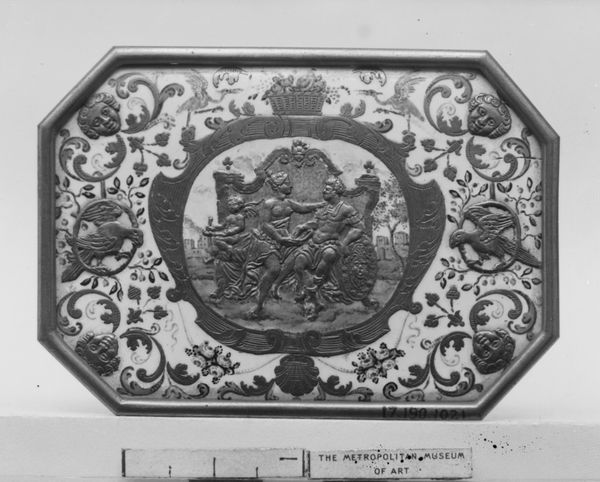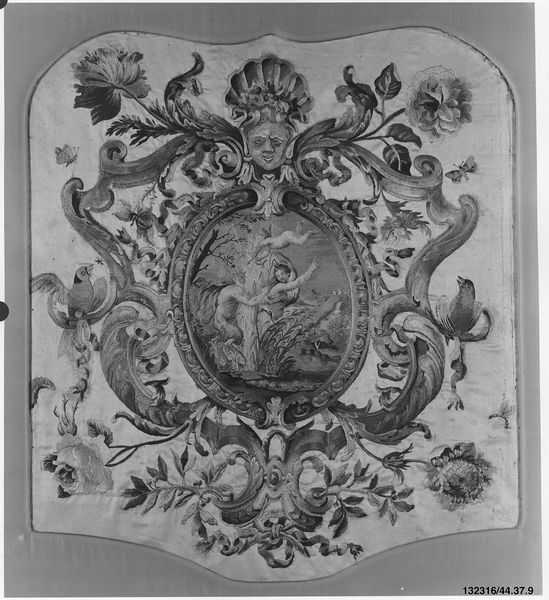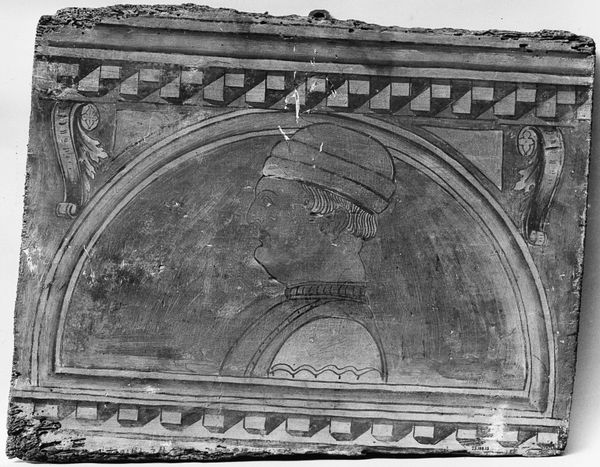
weaving, textile, sculpture
#
baroque
#
weaving
#
textile
#
hand drawn
#
geometric
#
sculpture
#
hand-drawn
#
decorative-art
Dimensions: 23 3/4 × 18 in. (60.3 × 45.7 cm)
Copyright: Public Domain
Editor: So, this is a fragment of a wall hanging, likely woven, created between 1700 and 1725 by Daniel Marot the Elder. It’s hard to ignore all the ornate Baroque detailing – so evocative of the period's opulence. How do you see this fragment fitting into the decorative arts of its time? Curator: This piece, while seemingly just decorative, speaks volumes about the society that produced it. Wall hangings like these were far more than mere decoration. They were powerful status symbols, signifying wealth and taste. Editor: Like visual real estate? Curator: Exactly! Think about the Baroque era – a time of absolute monarchs and powerful elites. Art wasn’t just art; it was a tool for projecting power. Marot’s designs, disseminated through engravings, shaped interior design across Europe. Do you notice how this piece, even in fragment form, suggests an expansive, perhaps even overwhelming, design scheme? Editor: Now that you mention it, the way the floral arrangements, vases, and crown-like figures repeat really emphasize… almost an endlessness, like it was meant to fill a whole room. Curator: Precisely. Consider, too, who commissioned such pieces and why. It would likely have been an aristocratic family looking to create a specific impression within their social circles, sending a clear signal of dominance. Editor: So the fragment reminds us how art, even something "decorative," functioned in a specific social context. Fascinating! Curator: It truly does, offering a tangible connection to the socio-political forces that shaped the lives of both artist and patron. What initially appears as surface ornamentation in fact illustrates profound historical relationships.
Comments
No comments
Be the first to comment and join the conversation on the ultimate creative platform.
